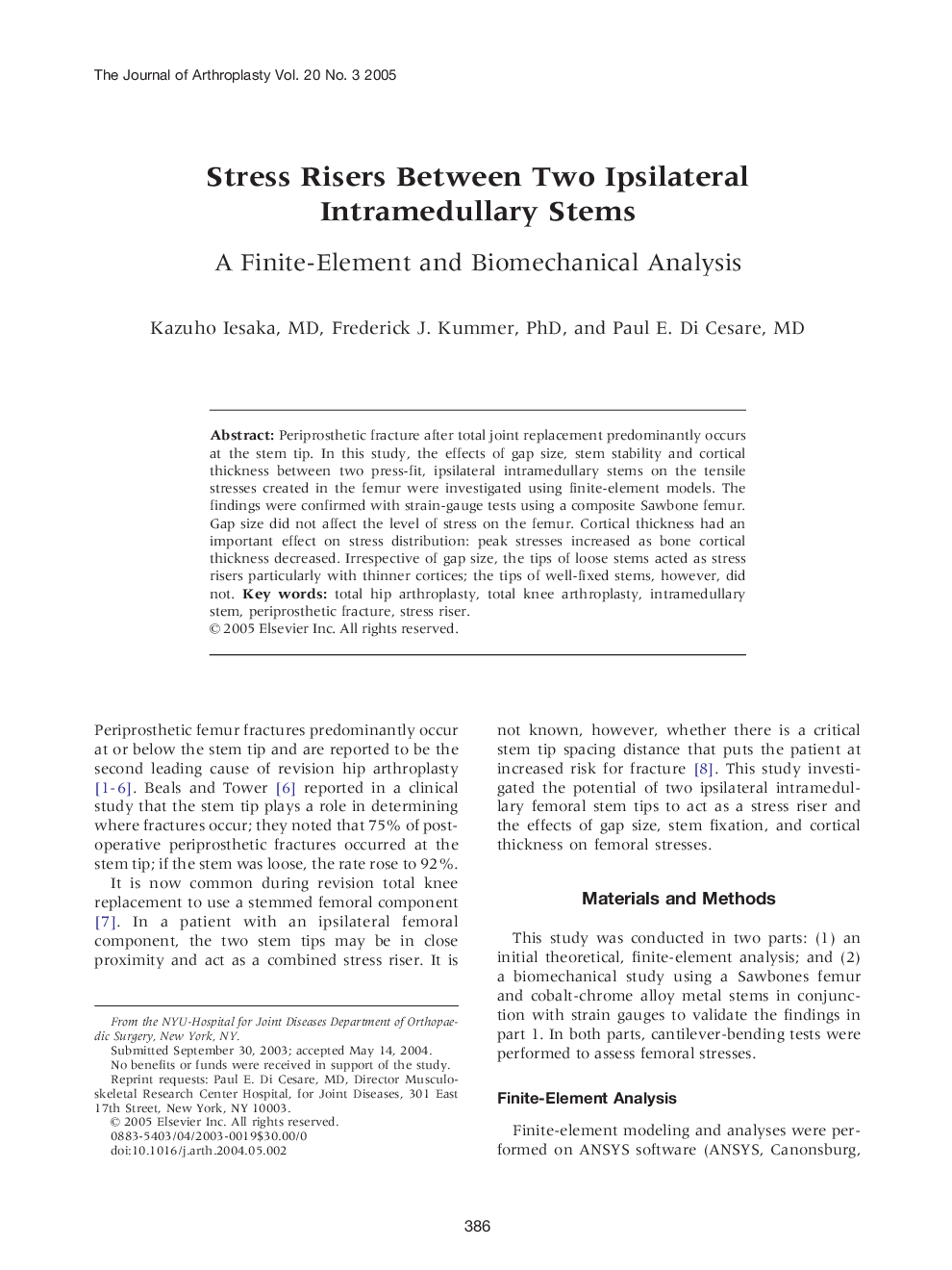| Article ID | Journal | Published Year | Pages | File Type |
|---|---|---|---|---|
| 10081791 | The Journal of Arthroplasty | 2005 | 6 Pages |
Abstract
Periprosthetic fracture after total joint replacement predominantly occurs at the stem tip. In this study, the effects of gap size, stem stability and cortical thickness between two press-fit, ipsilateral intramedullary stems on the tensile stresses created in the femur were investigated using finite-element models. The findings were confirmed with strain-gauge tests using a composite Sawbone femur. Gap size did not affect the level of stress on the femur. Cortical thickness had an important effect on stress distribution: peak stresses increased as bone cortical thickness decreased. Irrespective of gap size, the tips of loose stems acted as stress risers particularly with thinner cortices; the tips of well-fixed stems, however, did not.
Related Topics
Health Sciences
Medicine and Dentistry
Orthopedics, Sports Medicine and Rehabilitation
Authors
Kazuho MD, Frederick J. PhD, Paul E. MD,
